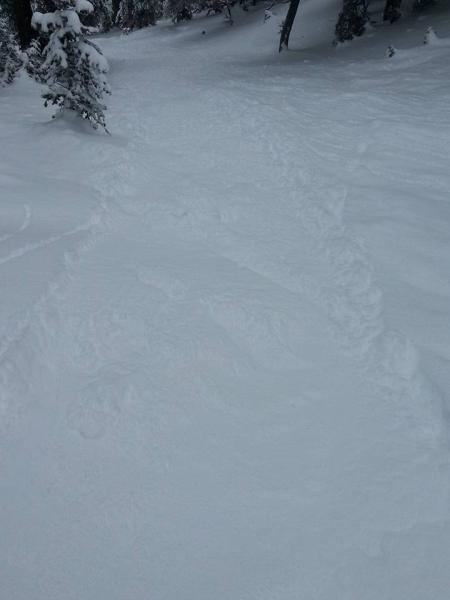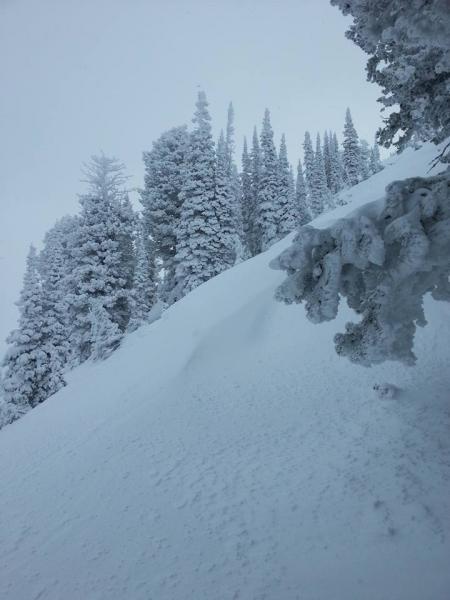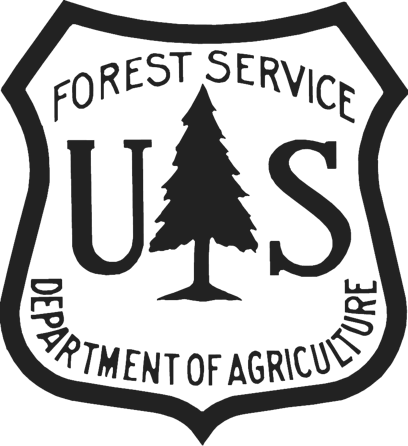Observation Date
2/3/2016
Observer Name
Bill Hunt
Region
Ogden » Snowbasin Backcountry
Location Name or Route
Snowbasin backcountry
Weather
Sky
Overcast
Precipitation
Light Snowfall
Wind Direction
Northwest
Wind Speed
Moderate
Weather Comments
Only 1" reported overnight, but we got another 3" on the snow stake this morning, which really helped the wind sheltered mid-elevation and lower elevation trees.
Snow Characteristics
New Snow Depth
4"
New Snow Density
Low
Snow Surface Conditions
Powder
Snow Characteristics Comments
With a dust on crust feel yesterday at mid-elevations, I was not looking forward to having to get into higher elevations for decent snow (with more wind exposure, and more deep facet uncertainty).
Test cuts today on a N-facing, semi-sheltered ridge at 9000' down to 8800' did not show cracking, although it was kind of a small sample size. This area is not too steep, mostly around 34 degrees, but with some limited areas rolling to 36-38 degrees, such that this area often cracks with a cut, but generally doesn't run much. No cracking to speak of today.
Heading out the No Name gate, it was disappointingly "dust-on-crust" feeling (wind scoured down to sun crusts I suppose; I don't think it rained that high), and I thought about heading back to a groomer; how bad would the exit be? Surprisingly, mid-elevation trees had benefited greatly from last night's reported 1", plus this morning's 3", resulted in a right-side-up foot above a dense "rain crust" from Jan 29th, which had softened enough (sublimated?) that it was not too harsh of a base. I did have a surface sluff run 150 feet in a lower elevation, steeper area.
So the mid-elevation (8500-7000) north-facing trees are not as bad as I had feared. Trying to keep slope angles below 35 degrees, especially above 8500'.
The exit down to 6400' was tolerable, not great but not hard rain crust either.
Red Flags
Red Flags
Wind Loading
Poor Snowpack Structure
Red Flags Comments
The wind loading can be avoided by choosing sheltered trees. The snowpack structure is better below 8500'. Its definitely better snowpack structure below 7000' (as per the forecast), but the Jan 29 rain crust becomes more of an issue the lower you go. 8500' to 7500' north-facing trees had good snow today; not as good as the Cottonwoods from what I hear, but still pretty good; a dense base with 4" of fluff on top.
Avalanche Problem #1
Problem
New Snow
Trend
Decreasing Danger
Problem #1 Comments
Practice sluff management in the steeps. Often that means cutting sideways occasionally, which might not be your preferred fall line, but its safer.
Avalanche Problem #2
Problem
Persistent Weak Layer
Trend
Same
Problem #2 Comments
Considering that the Jan 31 avi fatality (4 days ago) occurred at 9100', which is well within the elevations we have around Ogden, and the slide was on basal facets, with (as expected) a 40 degree slope angle, I am avoiding the 40 degree starting zones above ~8600', including the top of the Banana chute (one of my favorite areas), and the major Hells canyon slidepaths, such as the fall line out the No Name backcountry access gate. That one fractured last year at almost 8900 feet; pulling out way higher than many thought it would. The north-facing higher elevation Hells canyon lines are still some of the most dangerous, and tempting, lines in the Snowbasin periphery right now, IMHO. They are untouched for a good reason. These Hells lines have been the site of several avi fatalities, and they are textbook examples of rocky, cliffy, wooded terrain where an airbag, avalung, and everything else will not help you if you get caught in a slide.
Comments
Photo1: A steeper section in the trees around 7700' had enough new snow to sluff a couple hundred feet.
Photo2: Cutting these wind pillows, not too steep with an overall 34 degree slope angle, and localized bulges a bit steeper, did not find cracking in this particular area. This terrain lends itself to cutting towards a lower angle "safe zone".
Below, I am saying "Moderate" for the terrain travelled; I agree with the Considerable rating above 8500', especially for slope angles around 40 degrees.
Today's Observed Danger Rating
Moderate
Tomorrows Estimated Danger Rating
Moderate





